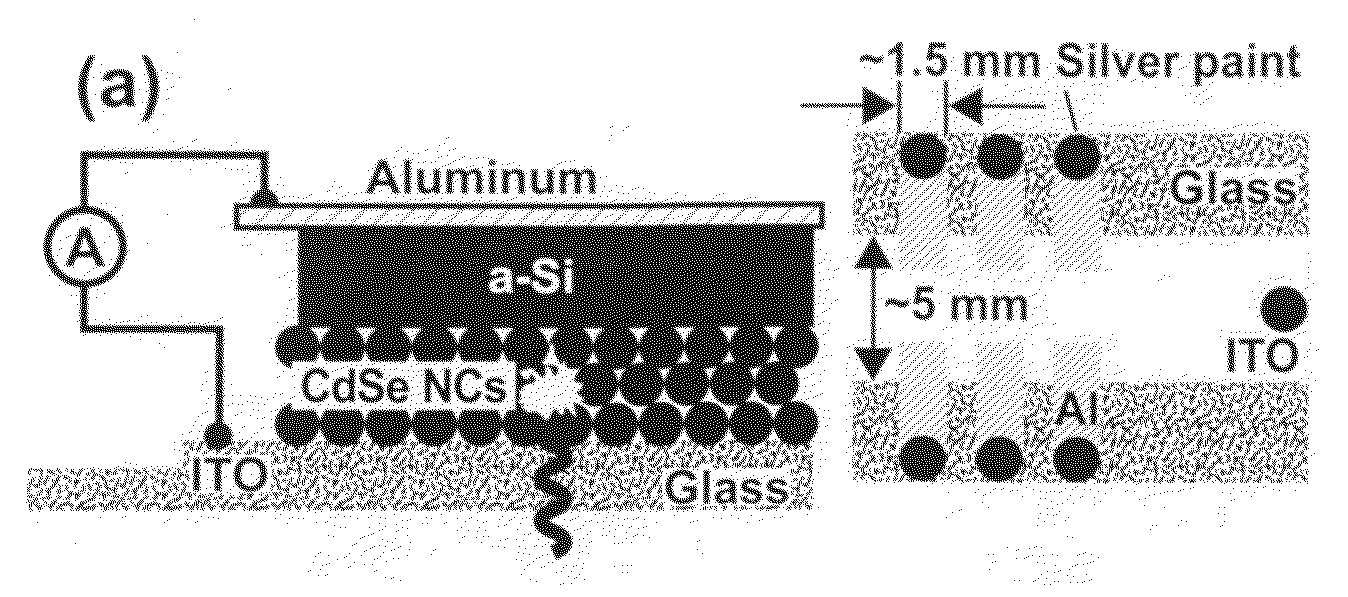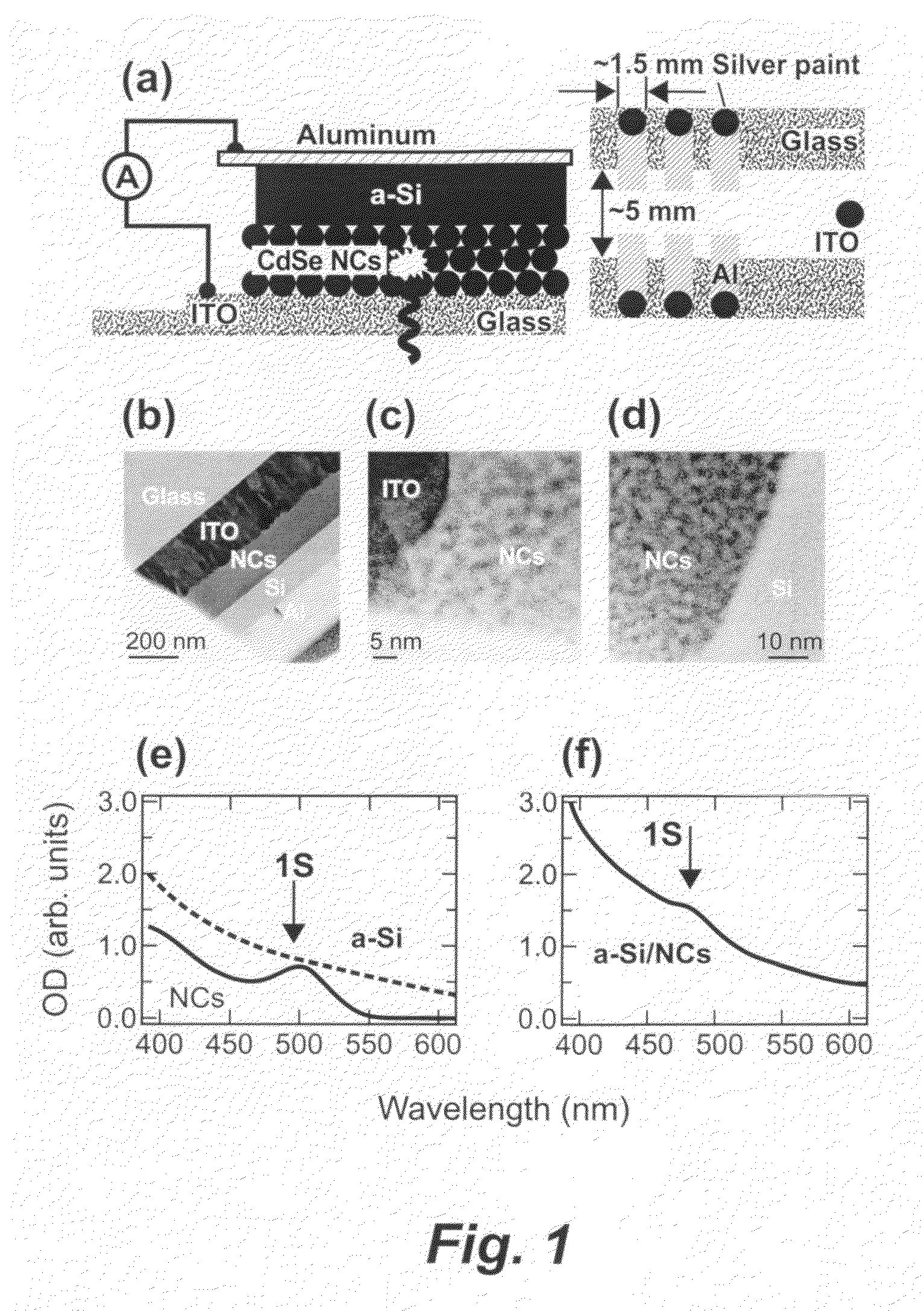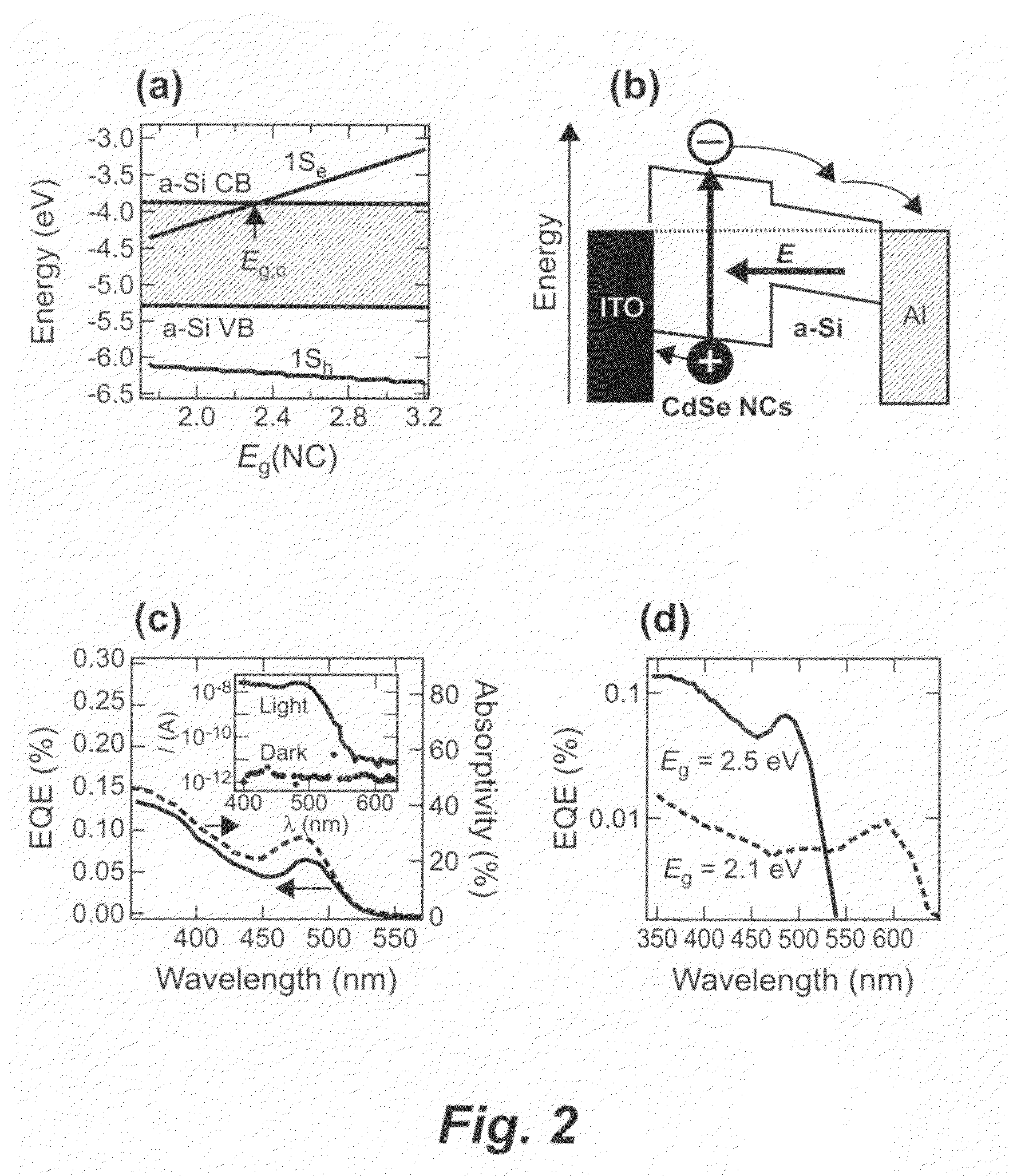Hybrid photovoltaics based on semiconductor nanocrystals and amorphous silicon
a photovoltaic and nanocrystal technology, applied in the direction of non-metal conductors, conductors, organic conductors, etc., can solve the problems of poor environmental and photo-stability, low carrier mobilities,
- Summary
- Abstract
- Description
- Claims
- Application Information
AI Technical Summary
Problems solved by technology
Method used
Image
Examples
Embodiment Construction
[0012]In this work, we explore a similar strategy—integration of NCs into traditional thin-film structures—but in application to PV devices. At present, the PV market is dominated by crystalline silicon (c-Si) cells. However, cost considerations have lead to rapid expansion of the PV market segment utilizing amorphous silicon (a-Si). In addition to reduced fabrication cost, a-Si provides the advantage of increased light absorptivity, which allows one to reduce the thickness of a solar cell, and hence material consumption, and the device weight. The efficiencies of a-Si solar cells are still lower than those of devices made of c-Si (˜9% versus ˜25%). Inclusion of NCs can potentially enhance the performance of a-Si PV structures through added flexibility in tailoring the device absorption spectrum, application of tandem architectures, and perhaps, increased conversion efficiency in the ultraviolet through carrier multiplication. From the fabrication prospective, integration of NCs int...
PUM
 Login to View More
Login to View More Abstract
Description
Claims
Application Information
 Login to View More
Login to View More - R&D
- Intellectual Property
- Life Sciences
- Materials
- Tech Scout
- Unparalleled Data Quality
- Higher Quality Content
- 60% Fewer Hallucinations
Browse by: Latest US Patents, China's latest patents, Technical Efficacy Thesaurus, Application Domain, Technology Topic, Popular Technical Reports.
© 2025 PatSnap. All rights reserved.Legal|Privacy policy|Modern Slavery Act Transparency Statement|Sitemap|About US| Contact US: help@patsnap.com



